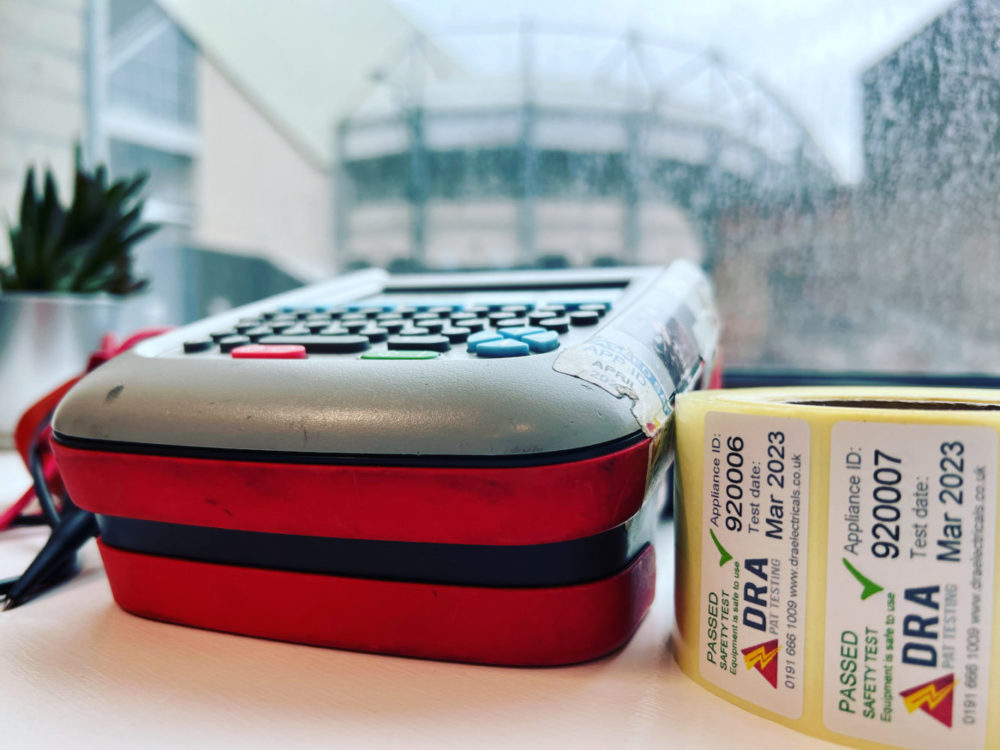Whilst you don’t really need to do anything to prepare your business for PAT Testing, it’s a good idea to at least be aware it’s going to happen and let your staff know.
If for no other reason than to reduce disruption. When staff don’t know who we are we get asked by everyone “who are you?” and we have to explain to them all who we are and what we do, and that doesn’t half slow things down, which in turn causes disruption.
If you can just tell your staff that we’re coming in on whatever day it is, and warn them that we will need access to their electrical equipment it’ll make all our lives much easier.
This article is intended to give some handy hints on how to best prepare your office, or other business for PAT testing.
How to best prepare your business for PAT testing
In order to best prepare your business for PAT testing, you first need to know what is involved. This is the same for every industry, no matter what you do.
When we arrive on site our engineer will benefit from a tour of your facility – this is helpful for at least these 5 reasons – he can check sufficient time has been made available for the job, he can see your site and talk to you about any issues he foresees, such as appliances that can’t be turned off or equipment stored at height. He can also do a personal risk assessment, and an assessment of how best to conduct the testing, which can be discussed with you to minimise disruption.
In order to carry out a PAT test we need to unplug the appliance; so it can’t be used whilst we’re testing.
It would be a big help if the worker will leave their work area whilst we’re doing our job, it won’t be for long, depending on what equipment they have.
We’re going to unplug the appliance, open the plug, check it’s ok inside, check the power cord and the appliance all around it, and if necessary make any repairs. General repairs include repairing the existing plug or replacing it fully, replacing the fuse if incorrect or defective, checking the cord and if necessary repairing that. Any other repairs would be more in depth, so we’d speak to you about the best course of action.
If an appliance is beyond repair, or repair is not within scope for us, we’ll fail it, label it as failed and advise you on what action to take.
If anything cannot be unplugged you need to tell us – such as server systems. If we suspect something shouldn’t be unplugged, such as the server we will talk to you about the options available.
We check each mains powered part of an appliance. For example this includes the computer plus detachable IEC power lead – that’s 2 items, both are inspected and tested, in different ways, to check different safety measures. If an appliance is battery powered, we don’t test it, but we will test it’s chargers.
If there are more items to test than quoted for – we’ll test them and charge for the extras. The additional per item rate is on your estimate.
If an appliance is fixed to the mains – the plug has been removed and its now hard wired via a spur, we’ll do the best we can – this may simply be a visual inspection, or if possible a test for earth continuity. You should get this item properly tested (see fixed appliance testing) in line with your EICR; usually every 3-5 years from installation.
When we have done what is needed, we label the appliance, then put the parts back together and plug it all back in. We’ll switch it on and let the worker know we’re done. It’s all theirs again now.
On completion of the job our engineer will advise you of the next steps; they’ll conclude what has been done, tell you when to expect the report and anything else necessary. They’ll also ask you to review their work – if you can do that please we would appreciate it.
We issue the invoice with or after the Certificate, which should be paid on receipt, although we do give credit on request.

Further information relevant depending on what you do
The rest of this information may not apply to you, but have a read of the bits that do.
PAT testing office desk areas
PAT testing IT equipment is quite straightforward; it’s a quick process. It only takes about 5 minutes to PAT test a computer, but the user presents more issues.
- People with ‘toys’ on their desks – we come across desks with all kinds of things on; lego, models, etc. These need moving – we can’t guarentee to not knock them over and we will have to move them as we will have to move the equipment we’re inspecting.
- Mess / personal items under desks – shoes, bags, etc. under desks. The odd one is fine, but we have seen desks with an entire wardrobe underneath.
How to make sure nothing gets missed
It’s inevitable something will get missed, it’s impossible to prepare for every eventuality, and you know when you open your desk drawer you’ll find another phone charger. But if we prepare we can prevent things getting missed.
Check drawers and cupboards – we’re not going to be rummaging around in your drawers, so get everything out of them that needs testing – get staff to check too.
Personal items brought into work – if anyone brings in personal electrics they should be PAT Tested, and if not, don’t let them plug them in. Hair straighteners, phone chargers, personal laptops.
People who work off site – do you have field agents, engineers or home workers – all their gear needs testing too. Get them to come in on the day of testing, or arrange for us to visit them.
The Cleaners Cupboard – it probably has a hoover in; make sure we’re made aware
The Christmas Tree – everyone forgets the Christmas lights and these are a major cause of office fires in the UK. See this article on safe use of fairy lights.
The IT store room – this can have loads of things in – make sure you know what needs testing and what doesn’t. If it never gets touched, and won’t be used in the next year, don’t bother getting it done – that’s just a waste of money.
Appliances kept up high
Think Projectors, or stage lighting – these are up high, attached to the ceiling and may need specialist systems to access them like scissor lifts or scaffolding. We don’t do ‘working at height’. If we can reach something from a 2-3 step stepladder you provide that’s fine, but anything more than that you’ll need to bring it to ground level to test. Or define it as very low risk as nobody who doesn’t install it has access to it.
Rental Properties / Student Lets
If you have booked us to inspect a property please prepare correctly:
- Warn the tenant we’re going into the property – we don’t want to wake them up or find them in bed (or other).
- Ask them to make sure white goods are not in use – if the washer is on, we can’t test it.
- Ask them to tidy up – a bit of mess we can handle, an unhygienic room may lead to us refusing to enter – and if we do that you still get charged. It doesn’t happen often but we have seen student rooms with human excrement on the floors, and rats in the kitchen!
- Likewise if we can’t get access, such as the tenant is not home or not answering we will still charge for the job, as we have kept to our side of the agreement by turning up.
- Tell us what appliances to check so we’re only checking yours, not the tenants’ too.
If you work from home
- If we come in to your home office, that’s the easiest way, but if you don’t want us to, bring the equipment to us and we’ll work outside.
- If you run a business from home, like a disco or you’re an entertainer lay your kit out ready somewhere, such as the kitchen table.
- If you have a scary dog – put it away somewhere.
Industrial equipment and tools
Firstly, have you told us to expect these? If not, tell us now.
If you have 110v or 230v industrial equipment the process is different to a standard plug, and takes longer hence why we charge more. There’s also more chance of repairs and us getting dirty! We also will likely need to be wearing PPE – we don’t carry it if we’re not expecting to need it, so if you don’t tell us and we don’t have it we may not be able to do the job when we arrive – and you may still get charged.
We only do basic repairs automatically and free, such as tightening screws and rewiring the plug. If any of the following need doing we will charge extra – repairing damaged flex by cutting it back to a safe location then rewiring the plug, replacing the full plug, replacing the full flex.
For 400v / 3phase equipment we will do an inspection and test, and basic repairs but will not rewire or replace the plug – these need experts to do this task.

